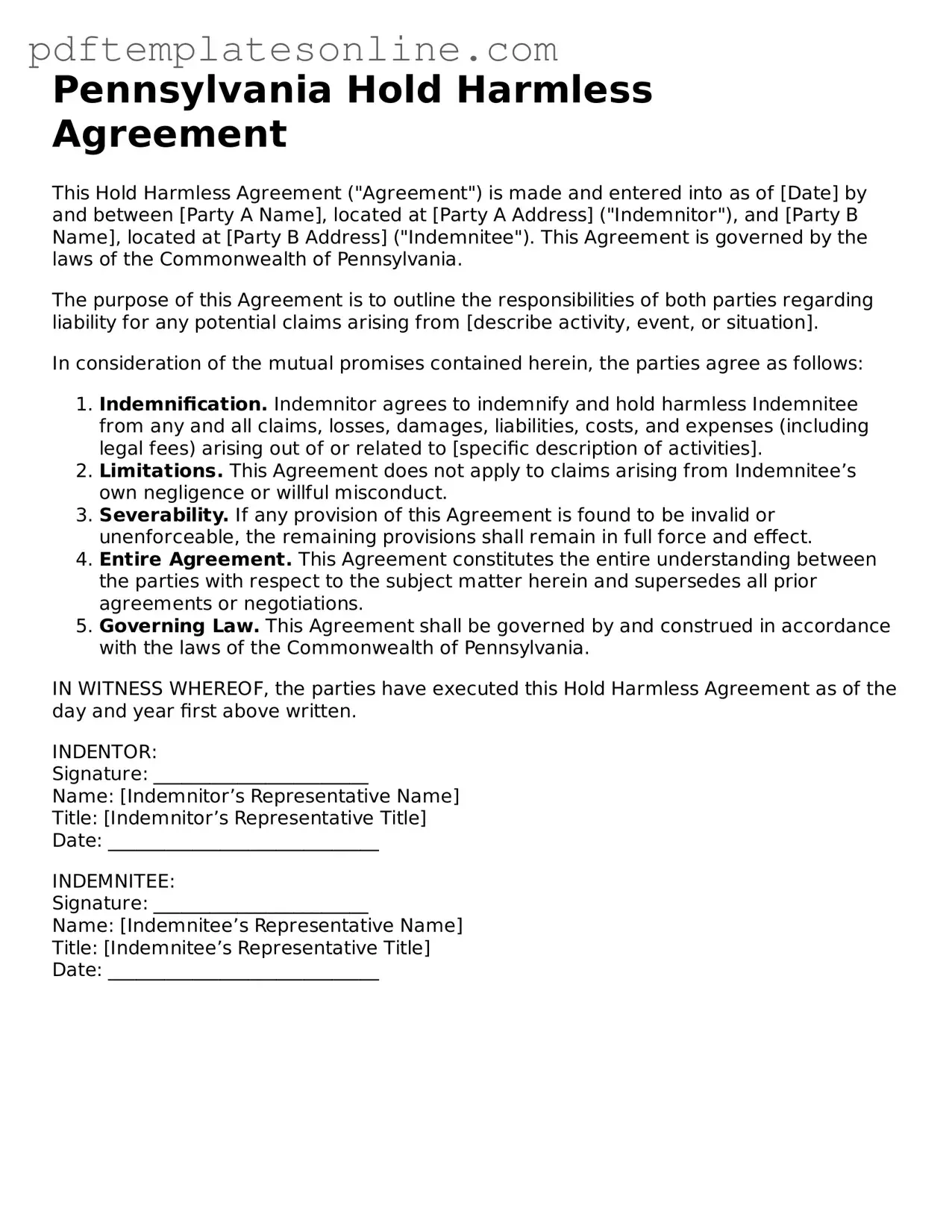Official Pennsylvania Hold Harmless Agreement Document
The Pennsylvania Hold Harmless Agreement form is a legal document designed to protect one party from liability for any damages or injuries that may occur during a specific event or activity. By signing this agreement, participants acknowledge the risks involved and agree not to hold the other party responsible for any resulting claims. Understanding this form is essential for anyone looking to engage in activities where potential risks are present.
Access Hold Harmless Agreement Editor Now
